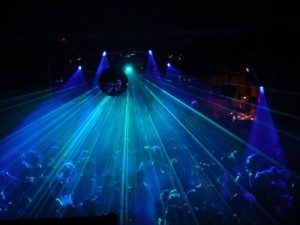Lights flashing, bass pumping, dancing, and drinks being poured are all reasons why nightclubs and bars are popular night time destinations. In the heat of the moment with alcohol pulsing through their veins and personal space being invaded, tempers can flare.
All of these things are a recipe for disaster with the end result being injury and possibly death. How did a gun or knife get past security? Where was security? If negligent security was not present, your accident could have been avoided. Learn more about a lawsuit below and contact our New York crime victim lawyers today to learn about your own legal options.
Consuming large quantities of alcohol have been shown in studies by the National Institute on Alcohol Abuse and Alcoholism to change mood and behavior, leading people to commit crimes they otherwise would have refrained from.
Like many other establishments, nightclubs and bars are held to a legal standard by premises liability law. This means that anyone who is invited onto the property has the right to expect protection against any foreseeable crimes. If the owner of the establishment does not take reasonable measures to protect against foreseeable crimes they can be held liable for any injuries suffered by patrons.
Common crimes committed while a person is intoxicated include assault, rape, and murder. Typical injuries in nightclubs and bars are caused by shootings and stabbings.

In the late fall of 2014, a fight broke out in the VIP section inside of Club Hive. Two men began the brawl which staff in the establishment couldn’t get under control and eventually spilled out into the street in front of the club. The police were called to break up the fight.
As the police arrived shots rang out in the crowd. An innocent 20-year-old woman, Tamar Sermons, was struck in the neck and leg by bullets. She was taken to a local hospital where she was pronounced dead. Two other victims were grazed by bullets on the hand and buttocks and were treated for their wounds.
The police were unable to identify the shooter.
In the state of New York assault comes in three forms, assault in the first degree, assault in the second degree, and assault in the third degree.
Assault in the first degree is considered a class B felony. A person is guilty of this when they cause serious physical injury to another person. There needs to be an intent to harm or disfigure the person – an accident is not classified as an assault. This also applies to circumstances where a criminal causes injury or harm to someone not participating in his crime while committing the crime or fleeing the scene.
Assault in the second degree is considered a class D felony. This assault takes place when someone intends to cause injury to a person and does so to either the intended victim or a third person. It also applies when someone prevents a police officer, firefighter, paramedic, or other medical personnel from performing first aid to someone who is injured.
Assault in the third degree is considered a class A misdemeanor. A person is guilty of this assault when they recklessly cause physical injury to another person or cause harm where criminal negligence is involved.
In 2006, New York City created four new pieces of legislation including “Imette’s Law”, which was named after Imette St, Guillen, a murder victim who was last seen alive at a local bar.
On February 25th, 2006 Imette left a bar called The Falls with a bouncer named Darryl Littlejohn. Her body was found later that day, naked, handcuffed, gagged, and wrapped in a blanket. It was determined that she had fought her attacker, evidenced by broken fingernails and defensive wounds. Some of her hair had been cut off and packing tape was wrapped around her head.
In 2009, Littlejohn was sentenced to life without parole.
Imette’s tragic story was just one example of why the new legislation enforced stricter requirements for the security at nightclubs and bars. These requirements include:
An additional publication was also released to encourage establishment owners to take security seriously. “Best Practices for Nightlife Establishments” provides additional resources for increased security measures and can be found here.
Did you know that if an establishment that sells alcoholic beverages serves alcohol to individuals who are obviously already intoxicated, the establishment can be held liable for any injuries sustained by someone who is assaulted by that individual? For example, if a bar serves alcohol to a patron, and that patron then physically attacks another person, the victim can pursue legal action against the bar.
This is referred to as Dram Shop Law. Each state has established its own regulations regarding the Dram Law. Dram Shop statutes also apply where the drunk individual proceeds to drive home drunk, hits and injures or kills somebody else in a car accident.
For more on crime victims and other types of accidents, visit: https://banvillelaw.com/crime-victim-lawyer/negligent-security/apartment-buildings/